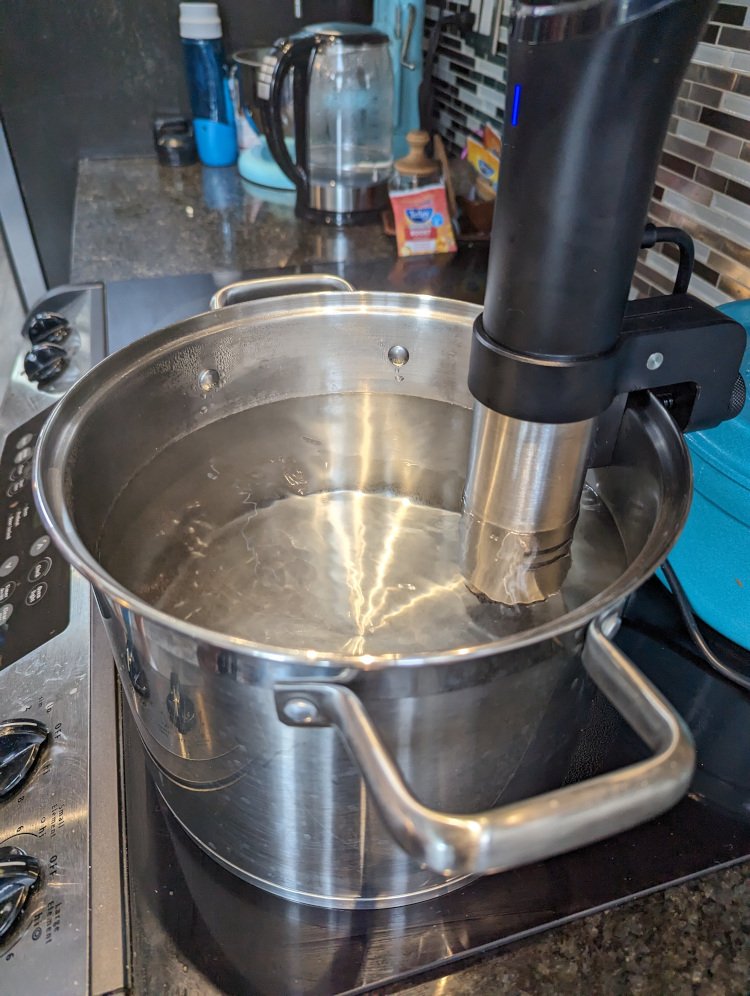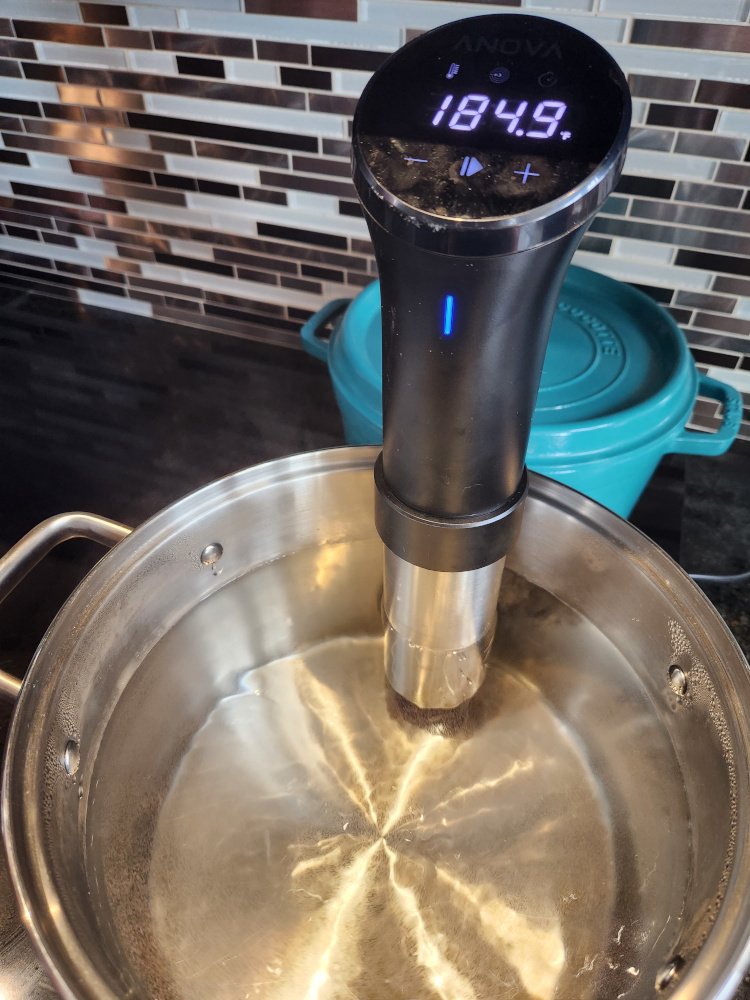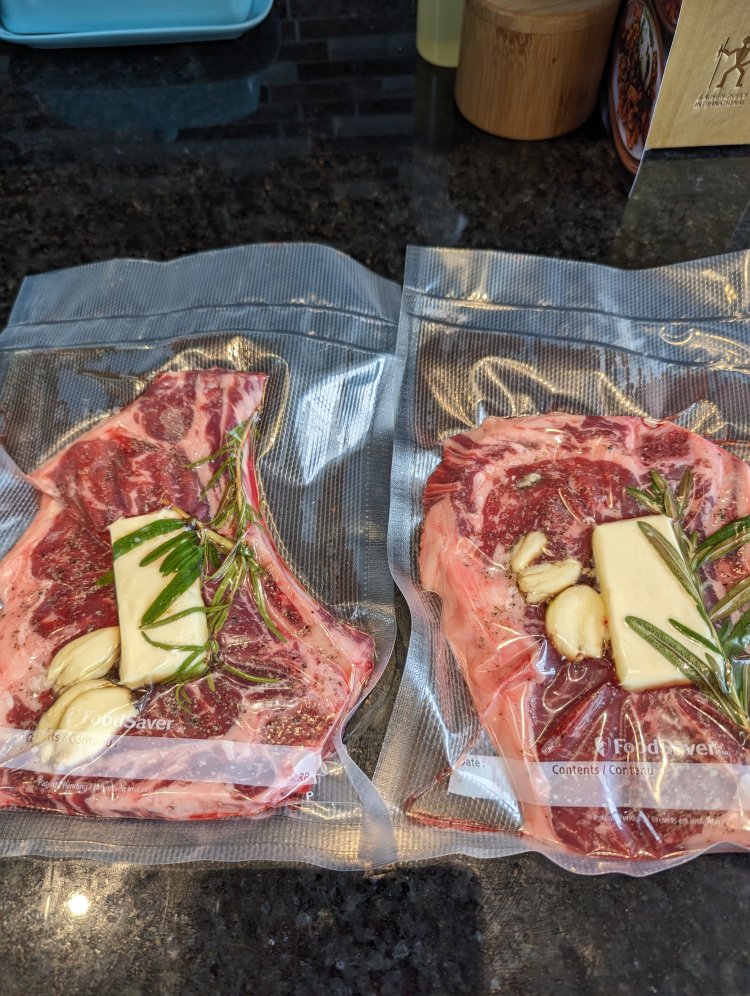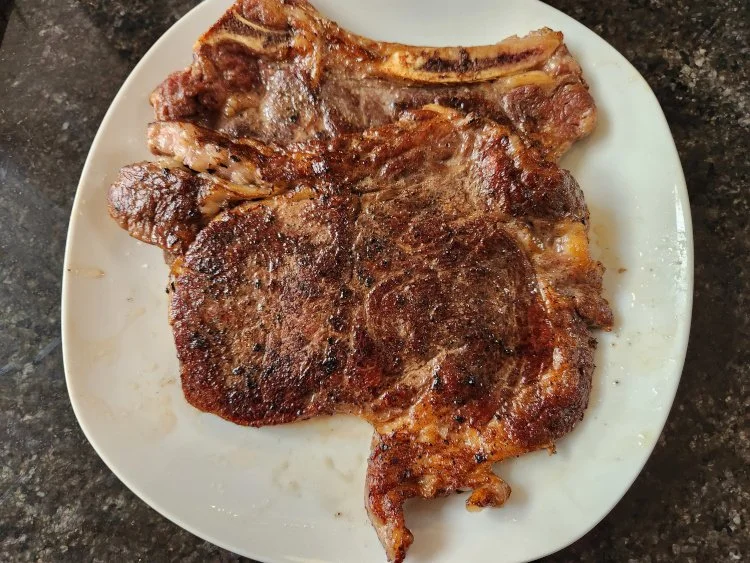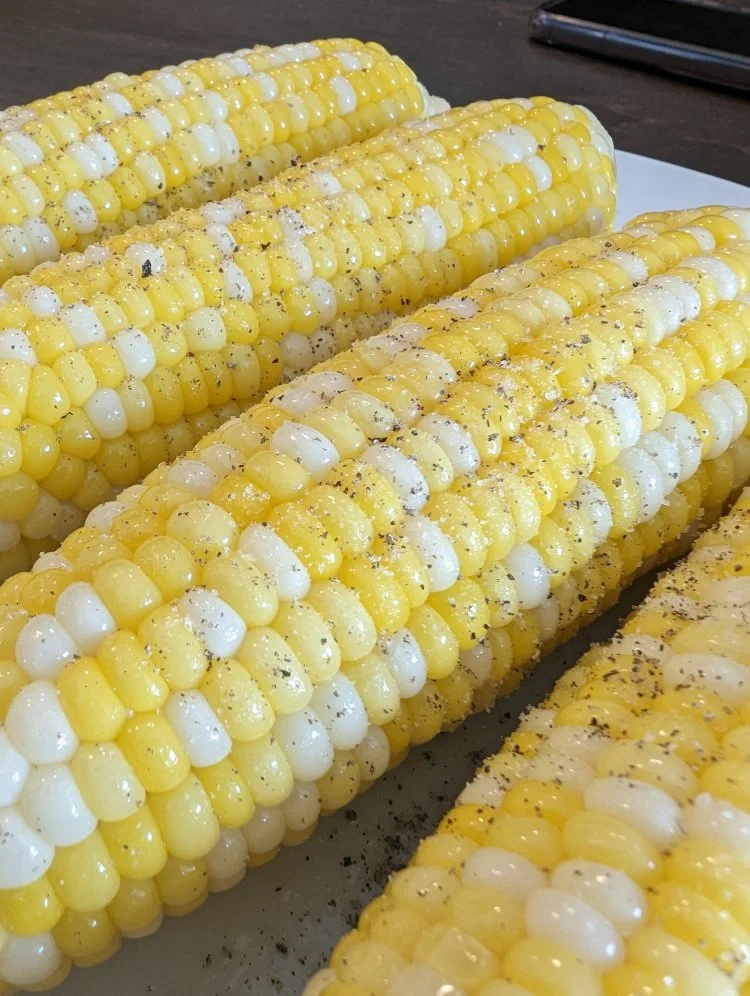So You Want to Be a Pretentious Cook? You Need a Sous Vide.
You’ve decided that you want to be a Great Cook™. Let’s go through the checklist:
✅ Chef hat
✅ Chef crocs
✅ Fancy knife
✅ You’ve watched Jon Favreau’s Chef
✅ You’ve watched Pixar’s Ratatouille
But wait, what is sous vide and why do you need to know about it to be a Great Cook™?
Sidenote: When we’re talking about sous vide, we are referring to the immersion style sous vide cookers. Not the self contained water oven devices that we literally just learned about. We imagine that for the most part, the advice and cooking directions are mostly the same for both.
Obligatory Disclaimer: This post contains affiliate links that help us earn a small commission from your purchase (at no extra cost to you). Each purchase supports the blog so we can continue to make content! If you use these links, we really appreciate it!
What is Sous Vide?
The term sous vide is French for “I have more money than sense”, although it can also be translated into English as “under a vacuum”. Frustratingly, neither of these two translations really tell you anything about how sous vide cooking works.
So what is sous vide? Well, it's a method of cooking where you cook something in a hot water bath for a long time. Generally you put whatever it is into a plastic bag of some sort, squeeze all the air out (creating a vacuum), and then put the bag with the food in it into a container of water. The container of water is kept at a constant temperature with a device called an immersion circulator, and the food gets its nice hot bath.
Is Sous Vide Pretentious?
Depends on who you ask. The average boomer would get all up in arms about the, “new fangled cooking method by boiling everything. Why can’t the kids these days just grill a steak like a normal person?” We feel confident in saying this because we were those boomers once upon a time. (Disclaimer: We are actually Millennials. 1993 represent!)
But, time marches forward and opinions have a way of changing. Now we think it’s a perfectly valid way of cooking food. In fact, in some cases, we’d argue it’s the preferred method of cooking.
If you have the disposable income, then sous vide is a fun cooking method to experiment with. But it’s not necessary by any means.
Sous Vide Pros
The biggest thing that sous vide-ing (did we just make up a new verb? Is sous vide-ing a gerund? English is hard) has going for it over other methods of cooking is that it is almost impossible to overcook something that is being cooked sous vide. That means no overcooked chicken, no overcooked steak. Enjoy perfect meat, every time.
Because the food is being kept in a bath of water, and the water is being kept at a constant temperature, the food should never get warmer than the surrounding water.
Another major pro to cooking something sous vide is that the food being cooked is less likely to lose its juices, aroma and flavour, resulting in a more flavourful end product. To quote ourselves on the day we tried sous vide cooking: “I can’t wait for the corniest tasting corn I’ve ever had”.
🔮 Mediocre Prediction: We firmly believe that in the future, apartments won’t come with an oven, instead they’ll just come equipped with an air fryer/toaster oven and a sous vide.
Sous Vide Cons
We’ve talked about why sous vide is so great, but like any cooking method, it has its drawbacks.
It wastes a lot of plastic. Whether you use Ziploc bags or a vacuum sealer, you’re creating extra plastic waste. Boo.
It takes longer to cook. The tradeoff of evenly cooked, juicy, tender meats is that it takes a very long time to cook.
It costs more money. You probably already have an oven or a stove where you can cook, a sous vide is just another appliance to clog up your kitchen cupboards.
And if you want to vacuum seal your food, that’s another appliance to add to the list.
It’s not going to work for every dish. An obvious point, but it has to be said. You don’t expect an ice cream machine to be able to make soup. (And yes, you will find sous vide recipes for soup, but in our humble opinion, this is dumb.) Part of becoming a good cook is learning to pick the appropriate tool for the job. Just because you can make soup sous vide doesn’t mean you should make soup sous vide.
Best Sous Vide Machine
We’re not experts — we’re just Mediocre Chefs (two regular people with a food blog and a dream). We don’t have a big budget that places like America's Test Kitchen and Serious Eats do, so we haven’t tested multiple sous vide cookers.
What we can say is this: the Anova Culinary Precision Cooker is pretty great! It’s what we used for our experiments in this post.
It’s not the cheapest sous vide available on the market (like this one), but it’s the one we have so it’s the only one we can speak for. (Shoutout to Brittany’s husband for the awesome birthday gift.)
If you’re interested in trying out sous vide for yourself, we recommend the Anova!
Sous Vide Meat 🥩
Steak is the typical example of meat cooked sous vide. This probably has something to do with the fact that people tend to have very strong opinions about overcooking steak, and as we discussed before, it is almost impossible to overcook something when doing it sous vide.
To cook a steak sous vide, place the steak into a bag along with some butter, garlic, and any herbs of your choice. We recommend rosemary and thyme. Then set your sous vide cooker to 130°F (we were aiming for medium rare-ish, you’ll need to adjust the temperature for your preferred level of steak done-ness). Let it enjoy its water bath anywhere from one to four hours, and once that’s done, you’ll have a perfectly cooked steak.
The only slight snag with cooking a steak sous vide is that when it’s done cooking, it comes out looking a little… grey. To remedy that, quickly sear both sides of the steak after it’s done cooking. Be careful though, you don’t want to sear it for too long, otherwise you’ll end up cooking the steak too much. You only want it on the pan for 20-30 seconds per side — just long enough to brown and crisp the outside of the meat. So make sure your pan is super hot and use oil with a high smoke point!
🥩 Mediocre Tip: In order to not over do it on the sear, set the sous vide for a few degrees less than what you actually want the steak to finish at, that way the sear can add that last little bit of heat. For example if you want your steak to be 130°F, set the sous vide cooker to 125°F.
Here is a list of what time and temperature to cook meat and fish at.
Sous Vide Vegetables 🥦
You can sous vide almost any vegetable. The only downside is that vegetables require a different temperature to cook (185°F) versus something like steak (130°F), so you can’t just throw your entire meal in the sous vide and call it a day. Vegetables don’t tenderize at lower temperatures, so you can try it, but it’s not going to work out. If you want to know the time it takes to sous vide different vegetables, we recommend this resource.
To make sous vide vegetables, you want to do any normal veggie prep you’d do if you were roasting it, such as removing stems, peeling, etc. You can keep vegetables whole (like beets, potatoes) but it’ll take longer to cook (obviously). If you want to spend less time sous vide-ing, slice or dice your vegetables.
To go along in the bag, you’ll want to add butter (or olive oil), and any spices or herbs your heart desires. You can use fresh herbs or dried herbs. We also highly recommend fresh garlic cloves. (We love garlic! If you do too, learn all about the science of garlic.)
🧑🍳 Mediocre Tip: If your food isn’t fully submerged (maybe it floats a little, and doesn’t completely sink), you’ll want to put something on it to weigh it down. If it’s not, it’s not going to cook evenly. We’re sure there’s something better out there, but we used a stainless steel meat tenderizer. It did the job.
For the purpose of our testing, we made both sous vide corn and sous vide beets.
Our verdict: sous vide corn is the only way we want to eat corn from now on. 🌽 We added two ingredients to our bag of corn: butter and garlic cloves. It blew our socks off. We ate two ears of corn each (sadly, that’s all we made). With sous vide corn, you don’t have to awkwardly try to butter your corn and wait for it to melt, and try to roll your corn on the plate to get it covered in buttery goodness. Instead, you just pour the melted butter from the bag onto your corn and enjoy. With a hint of garlic from the garlic cloves, it was perfect.
🧑🍳 Mediocre Tip: We also recommend sprinkling some Tajin on your corn for extra goodness.
Our other sous vide vegetable of choice was beets. Looking back, we should have chosen asparagus, so we’ll have to try that another day. The result of sous vide beets was: a very earthy tasting beet. Or maybe it was just the beets we had bought that day. We’ll give it another go, but after doing this experiment we concluded that we prefer roasted beets.
What Else Can You Sous Vide?
You can sous vide just about anything. In addition to meat and vegetables, here are some other fun foods that you can sous vide:
Eggs. Make the perfect soft or hard boiled eggs every time.
Cheesecake. “How?” You might be wondering. Put your cheesecake in little jars!
Fruit. Sous vide apples with cinnamon and sugar sounds really good right now.
Sous Vide Recipes
We’ll be making more with our sous vide in the future! Here are some recipes we’re excited to try:
Sous Vide Videos
Want more sous vide? Check out these videos!
Hopefully we've been able to convince you that sous vide isn't some mysterious, overhyped, fancy cooking technique. It's something that any home cook with some spare cash can do!
Do you agree? Do you have a favourite sous vide recipe? Let us know!


